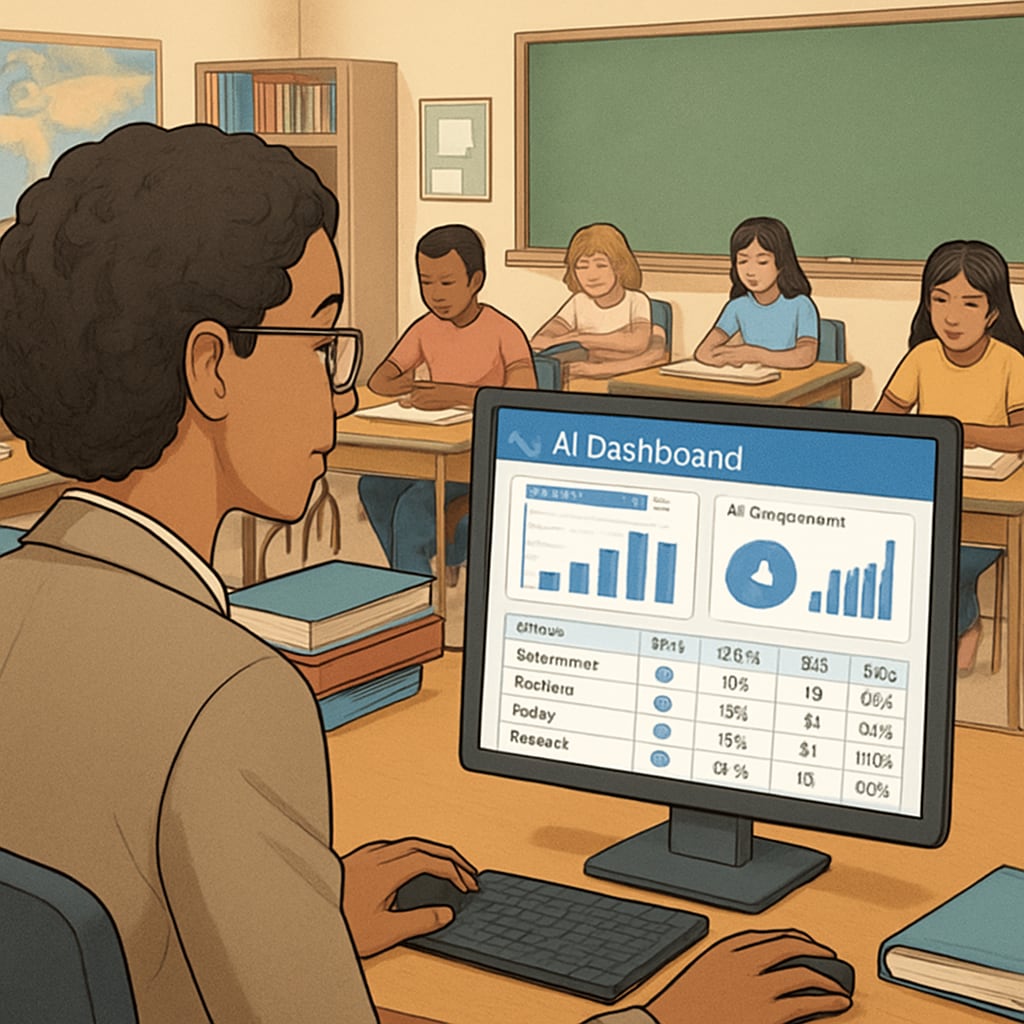Artificial intelligence (AI) is revolutionizing global education trends, profoundly impacting how teachers deliver lessons, how students learn, and how schools operate. From predictive analytics that personalize learning experiences to automated grading systems that save teachers hours of work, AI is no longer just an experimental tool. It’s becoming an essential component of modern education technology, particularly in K12 classrooms. This article examines the rapid adoption of AI in K12 education and explores how educators and students can adapt to this transformative shift.
How AI is Reshaping K12 Classrooms
The integration of AI in K12 education has led to significant changes in teaching and learning methodologies. One of the most prominent applications is personalized learning. AI-powered platforms analyze student data to identify strengths, weaknesses, and learning styles, allowing educators to create tailored lesson plans. For example, tools like adaptive learning software adjust the difficulty of exercises in real time, ensuring that students remain engaged and challenged at an appropriate level.
Moreover, AI is enhancing classroom management. Attendance tracking, behavior monitoring, and even classroom seating arrangements can now be optimized using AI systems. These tools allow teachers to focus more on teaching rather than administrative tasks, improving the overall learning environment.

Opportunities and Challenges of AI in Education Technology
AI offers numerous opportunities to improve education, but it also presents challenges. On the positive side, AI can bridge gaps in access to quality education. For instance, virtual tutors and AI-driven language learning apps provide affordable and scalable solutions for underserved communities. Additionally, AI can support students with disabilities by offering specialized tools like speech-to-text software and screen readers.
However, the adoption of AI in education is not without its challenges. Privacy concerns related to student data and the potential for over-reliance on technology are critical issues. Teachers and schools must balance the benefits of AI with ethical considerations, ensuring that technology is used responsibly. Policymakers and educators alike must work together to address these concerns and create guidelines for effective AI integration.

Preparing Educators and Students for the AI Revolution
As AI becomes an integral part of education, both educators and students need to adapt. Professional development programs for teachers are essential to help them understand and effectively use AI tools. Workshops, online courses, and collaborative training sessions can equip teachers with the skills needed to integrate AI into their teaching practices.
Students, on the other hand, must develop critical thinking and digital literacy skills. While AI can automate many tasks, it is vital for students to understand the technology behind it and its implications. Schools can introduce AI literacy programs to teach students the basics of machine learning, data privacy, and ethical AI use.
In addition, collaboration between tech companies and educational institutions is crucial. By working together, these entities can ensure that AI tools are user-friendly, effective, and aligned with educational goals.
The Future of K12 Classrooms with AI
The future of K12 education is undoubtedly intertwined with AI. As technology continues to evolve, classrooms will become more dynamic and interactive. Virtual reality (VR) and augmented reality (AR) powered by AI could offer immersive learning experiences, allowing students to explore historical events or scientific phenomena in a highly engaging way. Predictive analytics may also play a larger role in preventing academic struggles by identifying at-risk students early and providing targeted interventions.
While AI will never replace the human element of teaching, it will undoubtedly augment it, enabling educators to focus on what they do best: inspiring and guiding students. The key to success lies in embracing AI as a tool to enhance, rather than replace, traditional teaching methods.
In conclusion, the integration of AI in K12 education represents a significant shift in education trends and technology. By addressing challenges and leveraging opportunities, educators, students, and institutions can shape a future where technology and human expertise coexist to create better learning environments.
Readability guidance: Short paragraphs, clear headings, and concise language ensure the article is accessible. Key points are summarized using lists where appropriate, and overuse of technical jargon is avoided to maintain clarity.


